10 Yoga Exercises To Boost Mobility as You Age, According to a 63-Year-Old Instructor
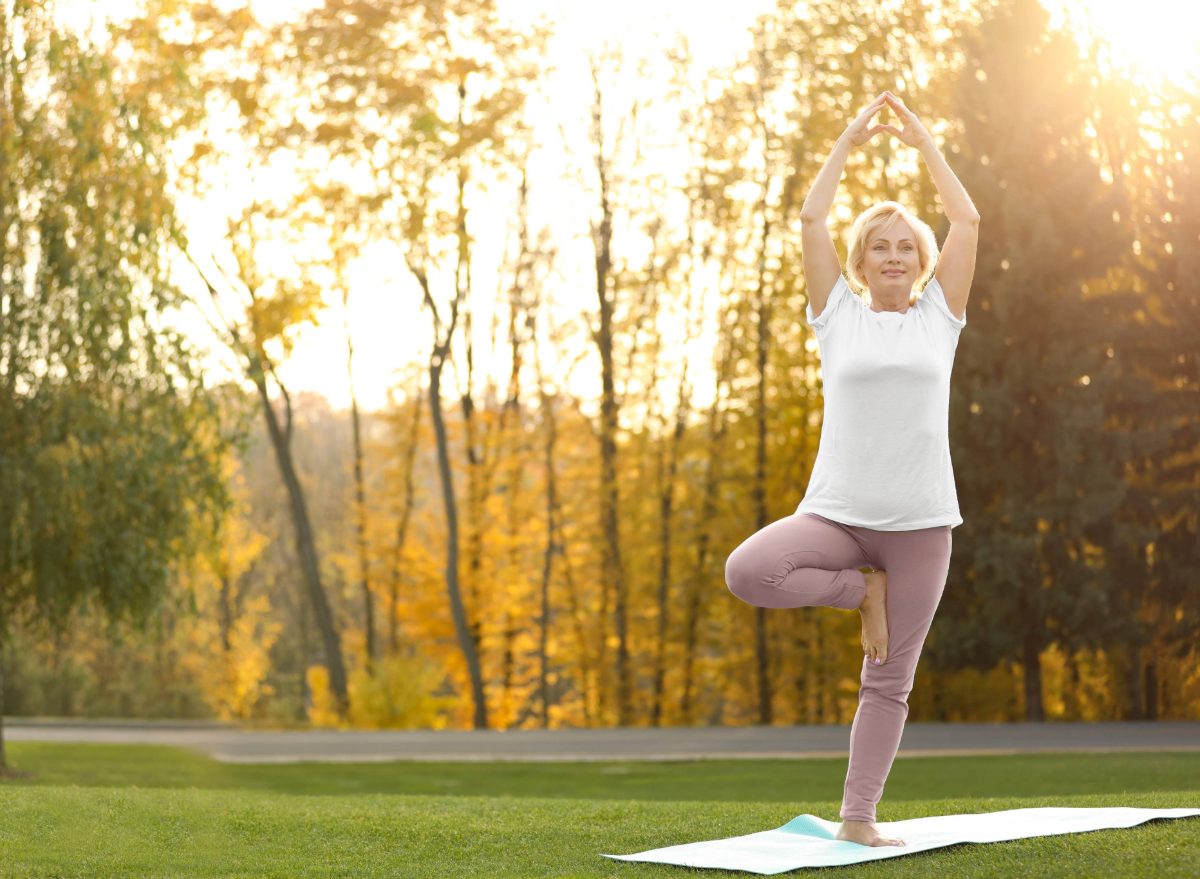
Mobility—aka your ability to walk or move with ease—is something you may not think about daily. However, it should be! According to research, mobility is critical for functioning seamlessly and leading an independent lifestyle. As you grow older, you may notice changes in your mobility, including modifications in your physical strength, balance, or gait. That’s why it’s imperative to maintain a regular exercise regimen. We chatted with 63-year-old Helen Hughes-Smith, instructor for YogaSix in Pittsburgh, who breaks down the 10 best yoga exercises for better mobility as you age. Keep reading to learn more, and when you’re finished, check out People Are ‘Retro Walking’ & Swear by the Benefits: ‘My Posture Is Now Nearly Perfect’.
Downward Facing Dog
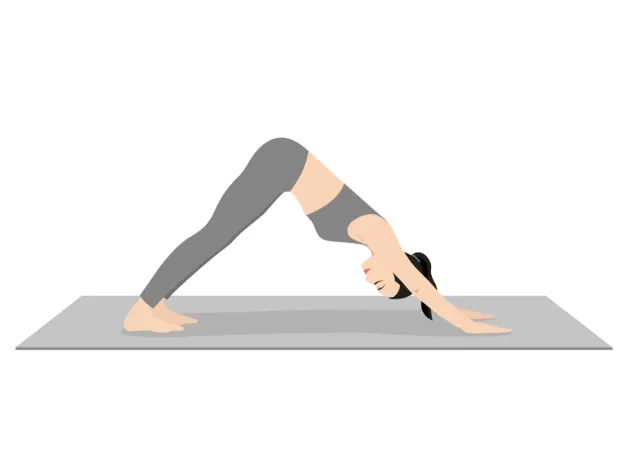
Downward dog strengthens your shoulders, arms, legs, and hands. In addition, it stretches out your ankles, calves, hamstrings, and shoulders.
Start on all fours. Press into the balls of your feet. Breathe in, and press into your hands. Exhale as you lift your hips to assume a downward dog pose. “Press equal energy into all four limbs and draw your chest toward your thighs,” Hughes-Smith instructs. “Release your head between your biceps. Keep your tailbone in a neutral position. Engage your abdominals, and allow your rib cage to remain neutral.”
Plank Pose
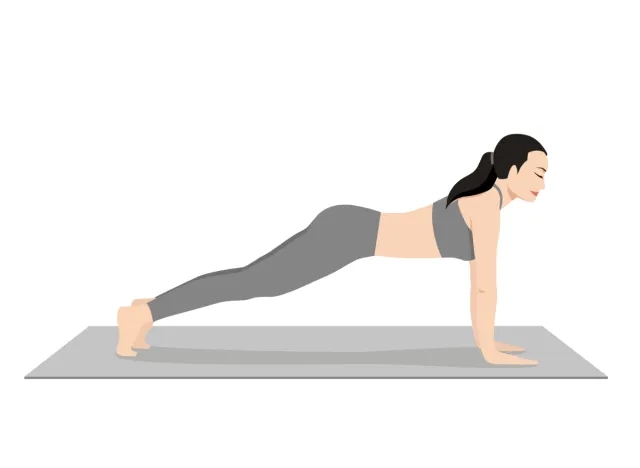
Plank pose is an “all-in-one posture,” says Hughes-Smith. It builds strength throughout your entire body—especially the core, arms, legs, shoulders, and wrists—and helps enhance your posture.
From downward dog, bring your torso forward so that it becomes parallel to the mat. Your wrists should be aligned with your shoulders. “Root through your index finger and thumb to strengthen your hands,” says Hughes-Smith. “Imagine you are pushing the Earth away with your arms and hands. Separate your shoulder blades away from each other, and draw your abdominals firmly inward. Your head is neutral, neither lifted nor lowered. Contract your quadriceps, and imagine you are squeezing a block between your inner thighs.”
Wide-Legged Forward Fold
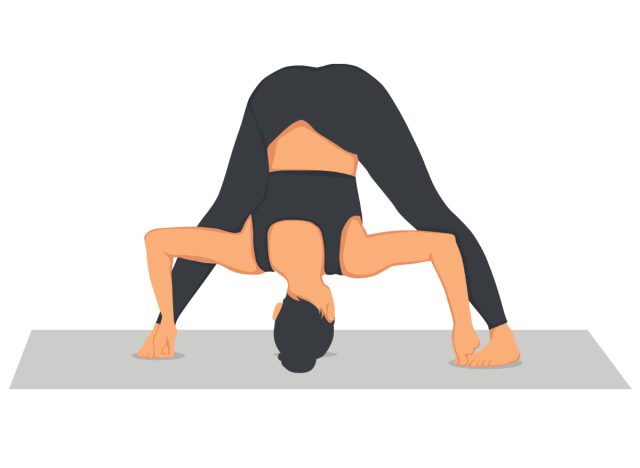
The wide-legged forward fold stimulates your mind and soothes pain from headaches and fatigue by flowing blood to the brain, explains Hughes-Smith. In addition, it stretches out your back, hamstrings, and calves.
Start by standing with your feet in a wide stance, about three to four feet apart. Hinge at the hips to fold forward, and press your hands on the mat. If you’re unable to reach the mat, use yoga blocks. “Gently engage your abdominals and soften your back muscles,” Hughes-Smith says. “Press equal energy into each foot—especially through the ball and center of your heel. Contract your quadriceps to allow your hamstrings to release. For lesser sensation, put a bend in your knees. For greater sensation, straighten your knees and shift your further toward the balls of your feet.”
Bridge Pose
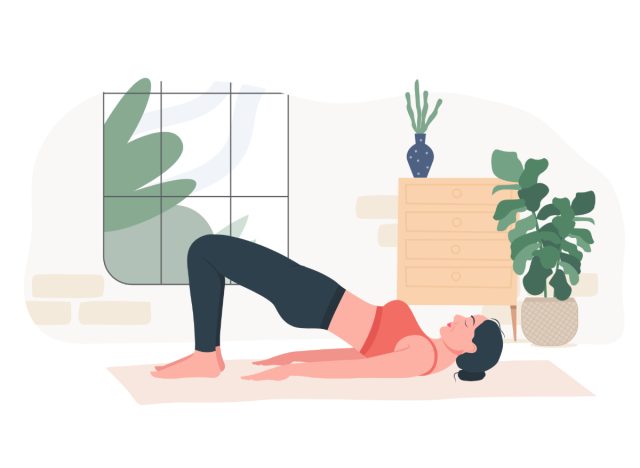
Bridge pose opens your chest, hip flexors, shoulders, and heart. It also builds strength in your legs, spine, and back.
Begin lying down flat on your back with bent knees. Bring your heels as close to your sit bones as you’re able to with your feet hip-width apart. Your arms should be at your sides with your fingers reaching toward your heels. “Tuck your tail, and press strongly into your heels to lift your hips and back from your mat,” Hughes-Smith tells us. “Keep your knees the same distance apart as your feet. You may include a block between your knees to create even more engagement of your inner thighs. Draw your shoulder blades away from your ears and bring length to your neck.”
Chair Pose
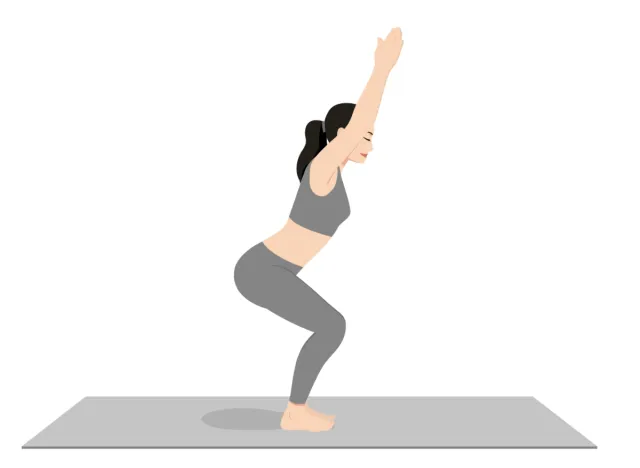
Chair pose fires up your quads and gives your Achilles Tendon and calves a solid stretch. This yoga pose also works on toning your abs.
Begin standing tall on your mat, breathe in, and bring your arms forward with your palms facing down. Release your shoulder blades. Breathe out, bend both knees, and bring your sit bones back and down toward your heels as if you’re sitting on a chair. “Put your weight into your heels and your toes should be visible in front of your knees,” Hughes-Smith instructs. “Drop your tailbone toward your heels, and avoid arching your back and creating a ‘duck butt.'”
Supported Straddle
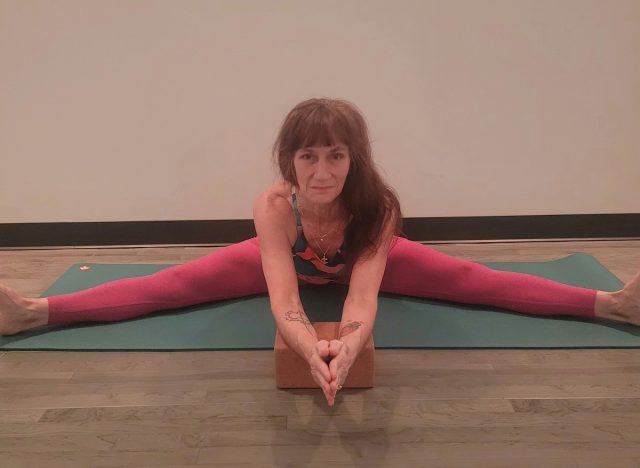
Supported straddle stretches your inner thighs, lower back, and hamstrings. Utilizing a bolster helps your body restore. Keep in mind that you may need an additional bolster or blanket if you have especially tight muscles.
“Align one yoga block at the tallest setting,” instructs Hughes-Smith. “Place a second yoga block at the medium setting perpendicular and a few inches in front of the first block. Take a yoga bolster, and rest it along blocks to create a ramp. Straddle the ramp, and bring your pelvis to the base of the ramp. Inhale to elongate your torso, exhale, and release your torso onto the bolster. For greater sensation in your inner thighs and hamstrings, widen your straddle, straighten your knees, and flex your ankles. For less sensation, bend your knees, narrow your straddle, and soften the flex in your feet.”
Tree Pose
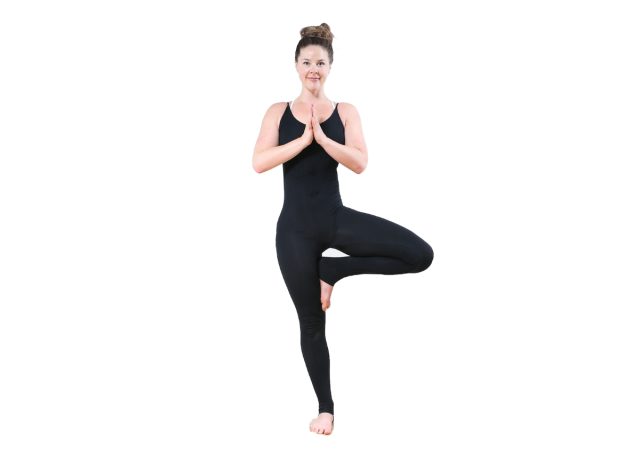
Tree pose boosts strength in your legs, ankles, and feet, and it enhances your posture, balance, and focus. This pose also stretches out your inner thigh muscles.
Stand tall on your mat. Shift your weight to your left foot, lift your right heel, and turn that knee 90 degrees to the right. Rest your right heel on your inner left ankle. Form a prayer pose with your hands at your heart’s center, or extend them up and out. “For other variations, you may raise your foot anywhere along your left inner leg,” Hughes-Smith suggests. “Try to avoid your knee joint. Root through your standing leg, and contract your quadriceps. Press your right outer thigh toward the back of your mat to create more openness in your inner thigh and groin. Repeat on the other leg.”
Legs Up The Wall
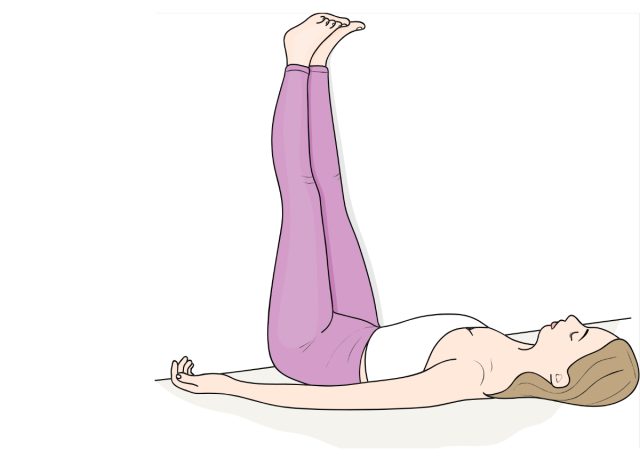
Legs up the wall decreases swelling in the legs and ankles and can ease any stress or tension in your body.
“You may do this posture without the use of props,” says Hughes-Smith. “You might enjoy having a bolster under your pelvis for some softness. Sit along a wall with one hip against the wall. Lie down on one side, roll onto your back, and swing your legs up to the wall. Your body should create a 90-degree angle at the hips. Close your eyes, and breathe deeply.”
Rag Doll
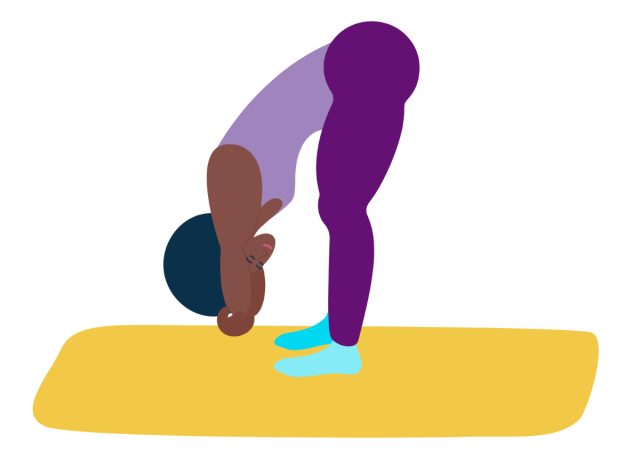
The rag doll pose alleviates fatigue and tension by allowing more blood to flow to the brain. It also gives your neck, back, shoulders, and legs a gentle stretch.
Begin with your feet a bit outside hip-width, and softly bend at the knees. Hinge at your hip joint as you let your torso “hang heavy” over the thighs. “Tuck your fingers into the creases of your opposite elbows,” Hughes-Smith instructs. “You may remain in stillness or you may choose subtle movements such as swaying side to side, shifting your weight, or a gentle twist.”
Low Lunge
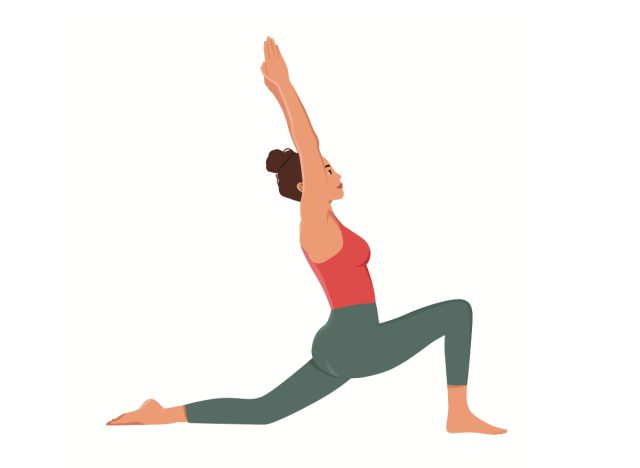
Last but not least, these yoga exercises for better mobility wrap up with the low lunge, which gives your hip flexors a deep stretch and strengthens your quads, glutes, and calves.
“From downward facing dog, step your right foot forward between your hands,” Hughes-Smith says. “Align your knee over your ankle bone at a 90-degree angle. Press firmly into the ball of each foot, and engage your inner thighs toward each other. You may use yoga blocks under your hands to raise the ground closer to you, or you may choose to lower your left knee to your mat. Activate your abdominal muscles, and allow your chest to remain open. Keep your head neutral and in line with the remainder of your spine.”









